Exploring the Strange, Ultra-Futuristic World of Tsutomu Nihei’s Blame!
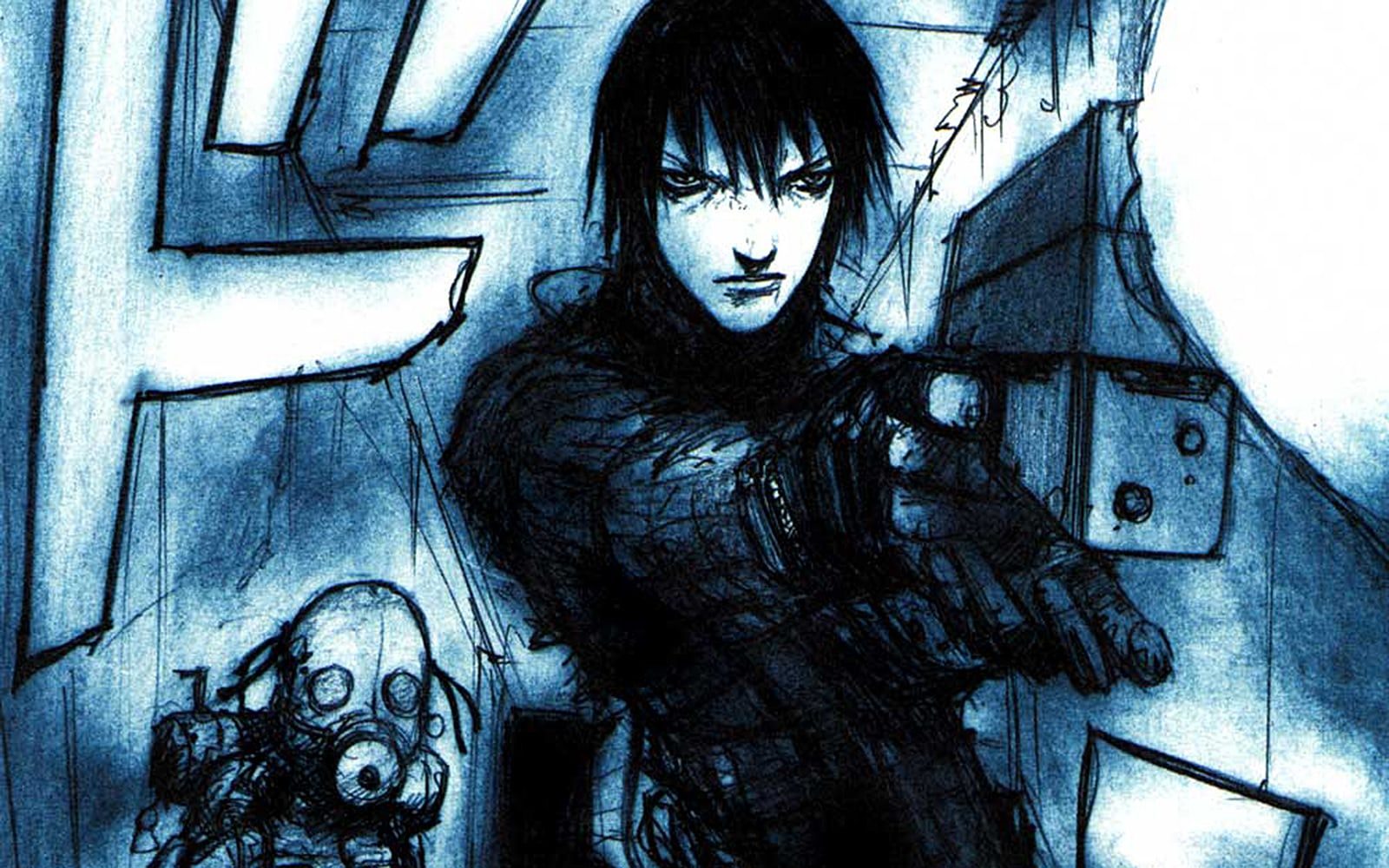
Last year, I reviewed the first volume of Vertical Comics reissue of Blame!, Tsutomu Nihei’s cyberpunk/sci-fi/horror manga. In my review, I described Blame! as “an action/adventure story… told with skill, intensity, and an incredible eye for engrossing, intricate detail,” and concluded that “if you’re a fan of dark, ultra-futuristic sci-fi with a touch of horror, then reading Blame! should pretty much be a no brainer for you.”
Having recently finished the reissue’s sixth and final volume, I can only reaffirm my earlier review. Blame! is a masterpiece, albeit a consistently dark and frequently disturbing one that depicts technology run amok in often graphic, grotesque, and completely alien ways. But even its more sedate moments can be quite confusing and obtuse. (Suffice to say, Blame! is not for everyone.)
The following contains spoilers for Tsutomu Nihei’s Blame!. Consider yourself warned.
Some of that is certainly due to Blame!‘s considerable lack of dialog and exposition. Indeed, there are entire chapters where characters speak only a handful of times (if that) as they make their way through the vast city that serves as the series’ far-future setting.
But Nihei is first and foremost a visual storyteller: his frames are full of little details that move the storyline along as much as or more than any bit of dialog could. This emphasis on visuals rather than dialog also adds to the speed at which Blame! unfolds — which is great for the many insane action sequences that fill its pages, and which seem to grow in scale and devastation with each new volume. More importantly, though, it adds to the series’ inimitable atmosphere.
Rather than give you details or in-depth explanations of the strange, bewildering technologies that dot his vast landscapes, he simply shows you them, in all of their bizarre, evocative, and even nightmarish detail.
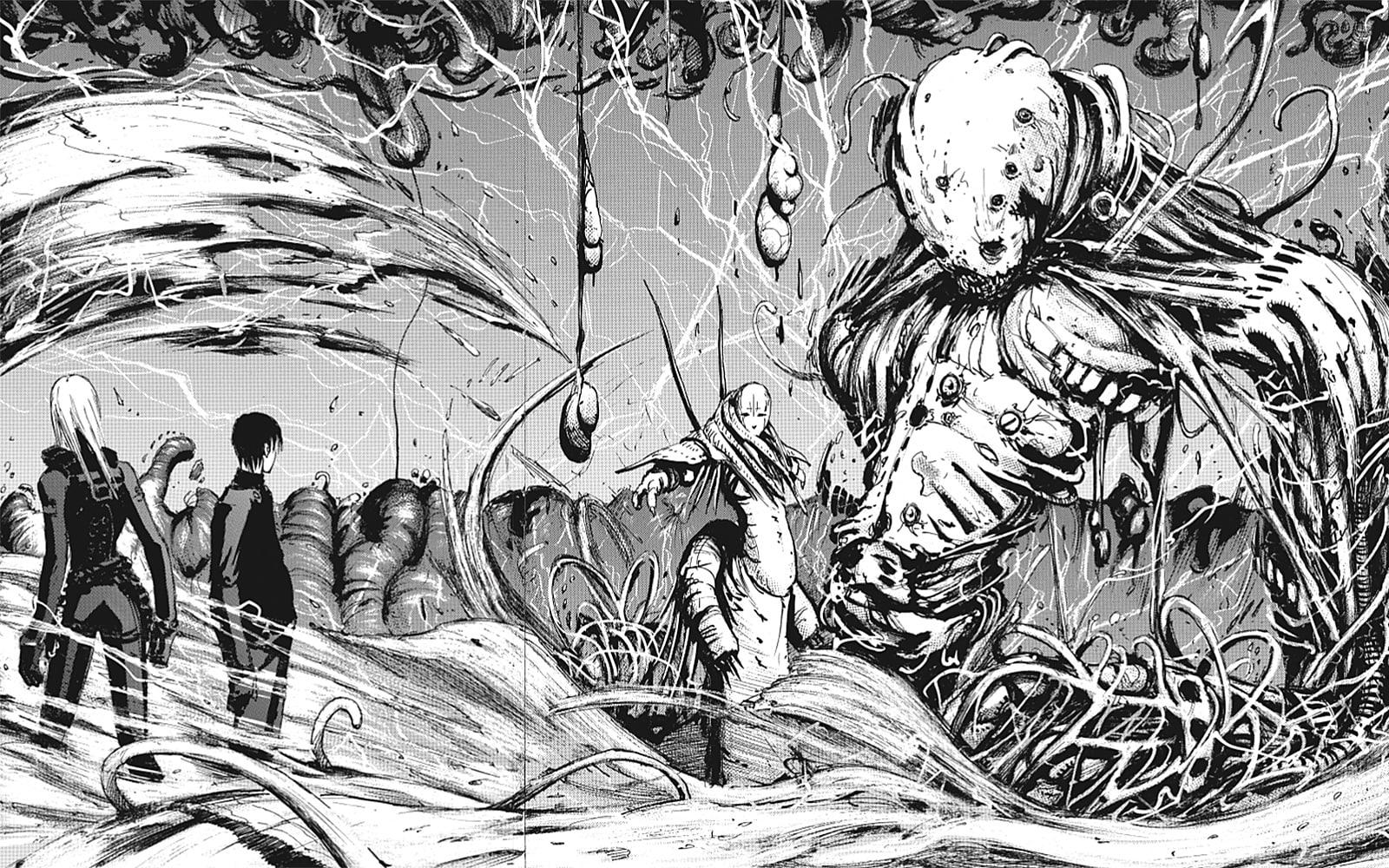
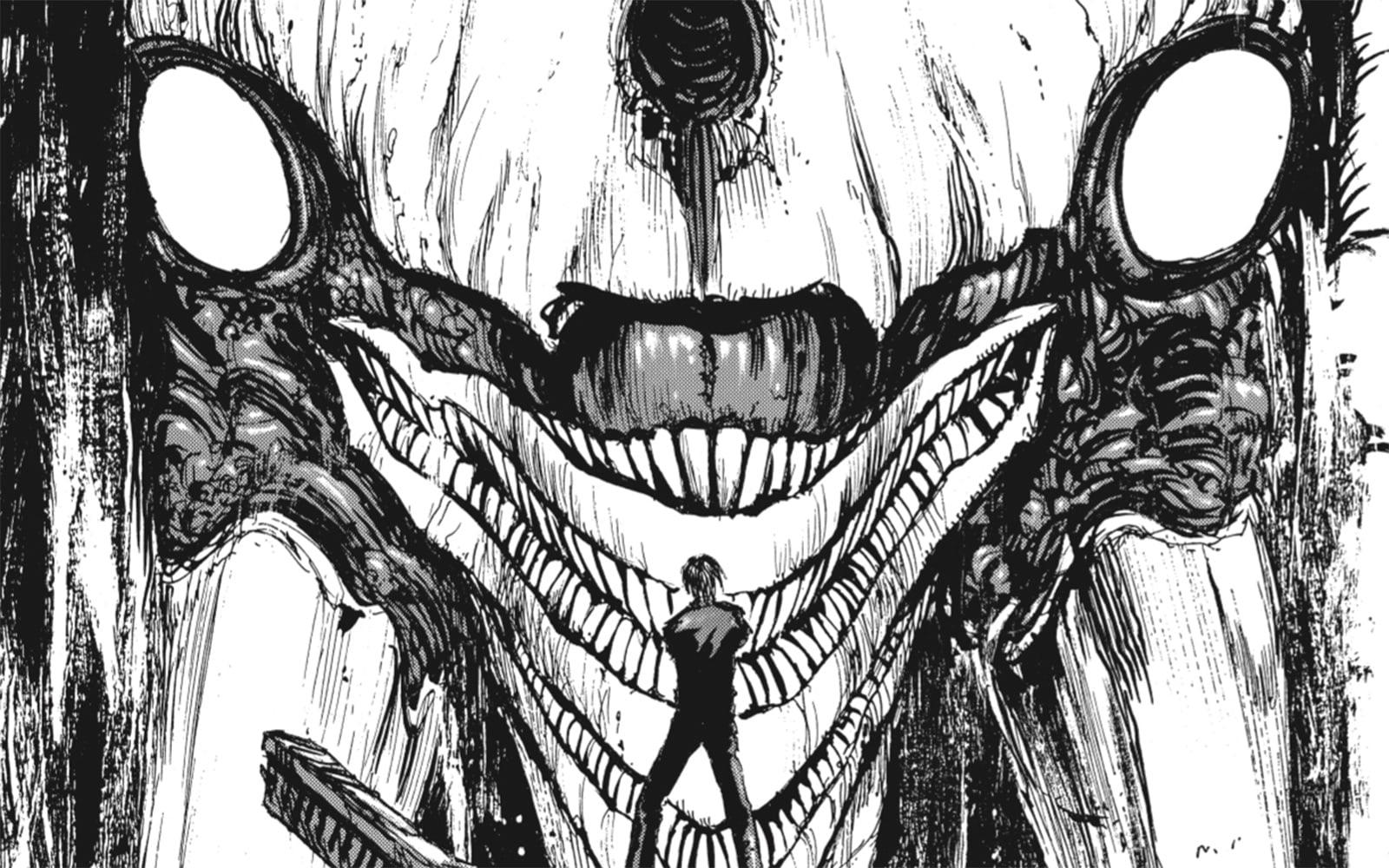
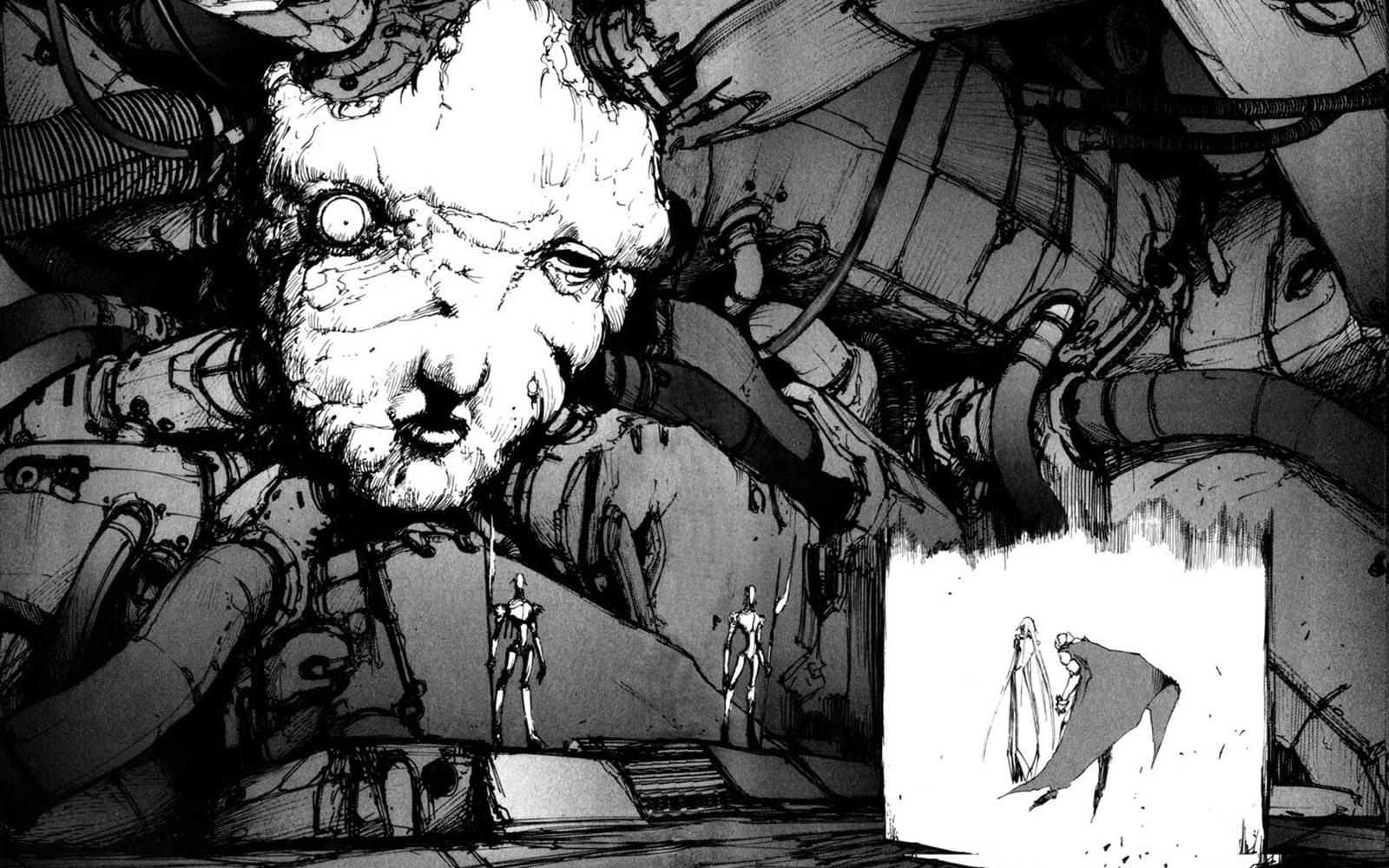
This can be a bit frustrating if you’re hoping for some technobabble that explains how a tiny gun like the Gravitational Beam Emitter can cause such mind-boggling levels of devastation. Or if you want to know more about how the Electrofishers or Silicon Life — two factions that are encountered throughout the series — function as civilizations. Or if you’re trying to puzzle out how the Governing Authority, Netsphere, and Safeguard all come together in some sort of coherent mythology. (Of course, plenty of fan theories and interpretations have cropped up in the two decades since the series was first published.)
At first, this seems like a liability, but the more I’ve thought about it, the more I realize this lack of detail only adds to the series. Nihei’s reluctance to answer such questions (within Blame!‘s actual pages, anyway) combined with his intricate, detailed, and often disturbing artwork, makes the series’ dark take on transhumanism and far-future dystopia so much more effective.
The result is the unsettling impression of looking at technologies, civilizations, and environments so futuristic and so far advanced that explanations simply aren’t feasible in any satisfactory sense — at least not to us 21st century humans. This becomes particularly true in the series’ later volumes, as Blame! takes some weird twists involving time travel and alternate universes — all implied (but never actually defined) as the results of inexplicable and unimaginable technologies gone to chaos.
That being said, Blame! contains plenty of moments where I’m pretty sure that Nihei was less concerned with creating a consistent mythology than he was with drawing scenes, like that of a knight in full armor facing down a cybernetic horror, simply because he thought they’d look bitchin’. (Which they do.)
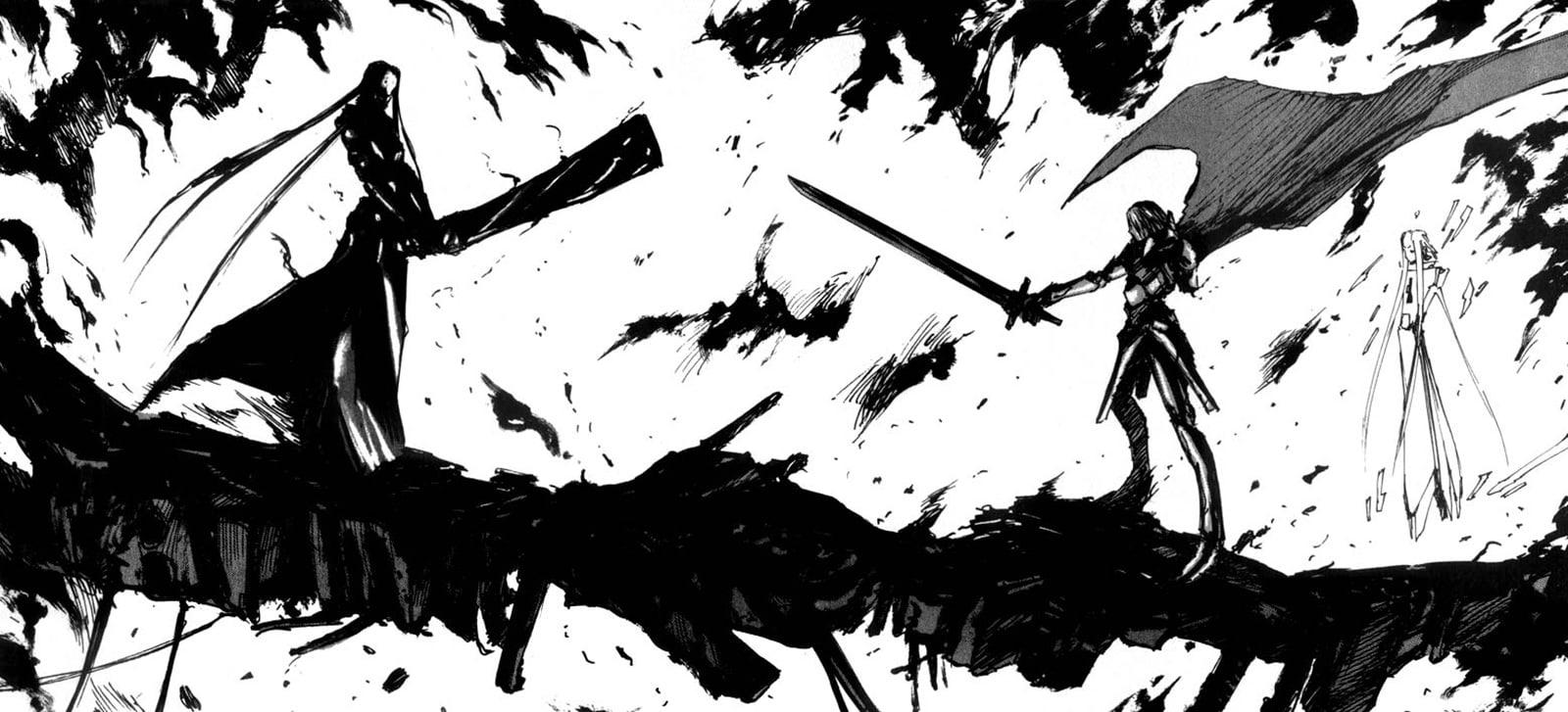
Blame! does have a plot that Nihei follows more or less, with some notable rabbit trails and divergent paths. But here’s a basic overview:
Blame! is set thousands of years in the future, and takes place in a giant structure simply called the City. The City, which began on Earth, has been growing randomly at an exponential rate for millennia without any human control, and has become a seemingly endless array of architecture made up of countless levels.
Some clues are given as to the City’s size. At the end of the prequel title NOiSE, which is set long before Blame!, a character comments that the moon has become part of the City’s structure. And towards the end of Blame!, Nihei depicts a room that’s 143,000 kilometers wide, or roughly the size of Jupiter. (In his Blame! and So On artbook, Nihei implies the city is actually a giant Dyson sphere that reaches at least as far as Jupiter’s orbit, giving it a radius of nearly 780 million kilometers.)
These huge distances also make the passage of time pretty irrelevant in Blame!. Given both the City’s size and that the series’ characters mostly walk everywhere — aside from the occasional tram or elevator ride, jetpack, or instance of teleportation — it’s reasonable to conclude that Blame!‘s storyline unfolds over centuries, if not longer. Which only adds to the series’ atmosphere, and even gives certain aspects — like the protagonist’s seemingly impossible mission — a tragic quality.
Before working in manga, Nihei trained to be an architect. He puts this training to good use across the manga’s pages, drawing truly jaw-dropping vistas and vast cityscapes that are limited only by his imagination. One frame might contain a Blade Runner-esque structure and then a few pages later, you see a vertigo-inducing staircase or something that looks like a giant gothic cathedral. And why not, given the City’s random and runaway nature? In any case, these structures always dwarf the characters, and in some ways, make the City the series’ main character.
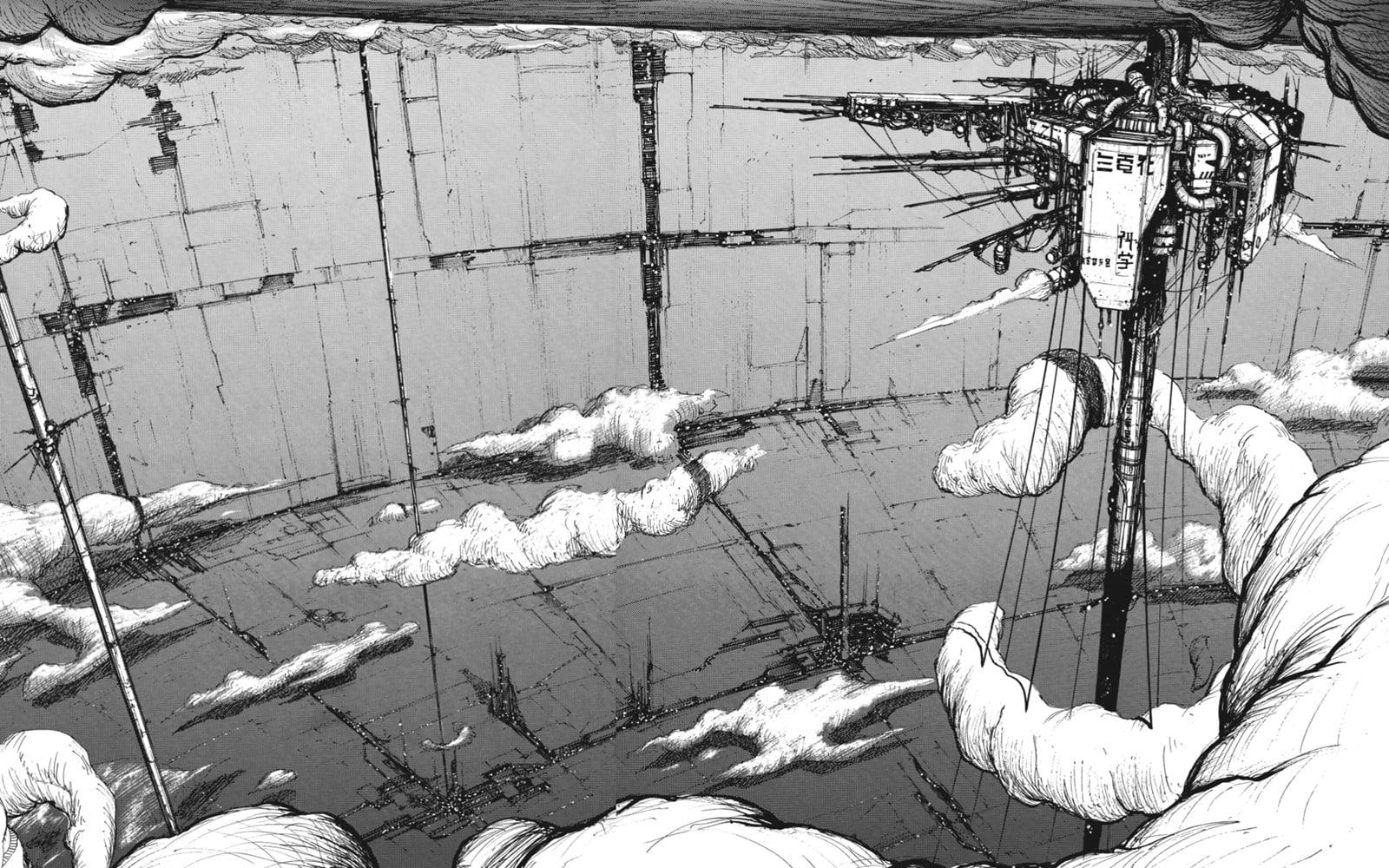
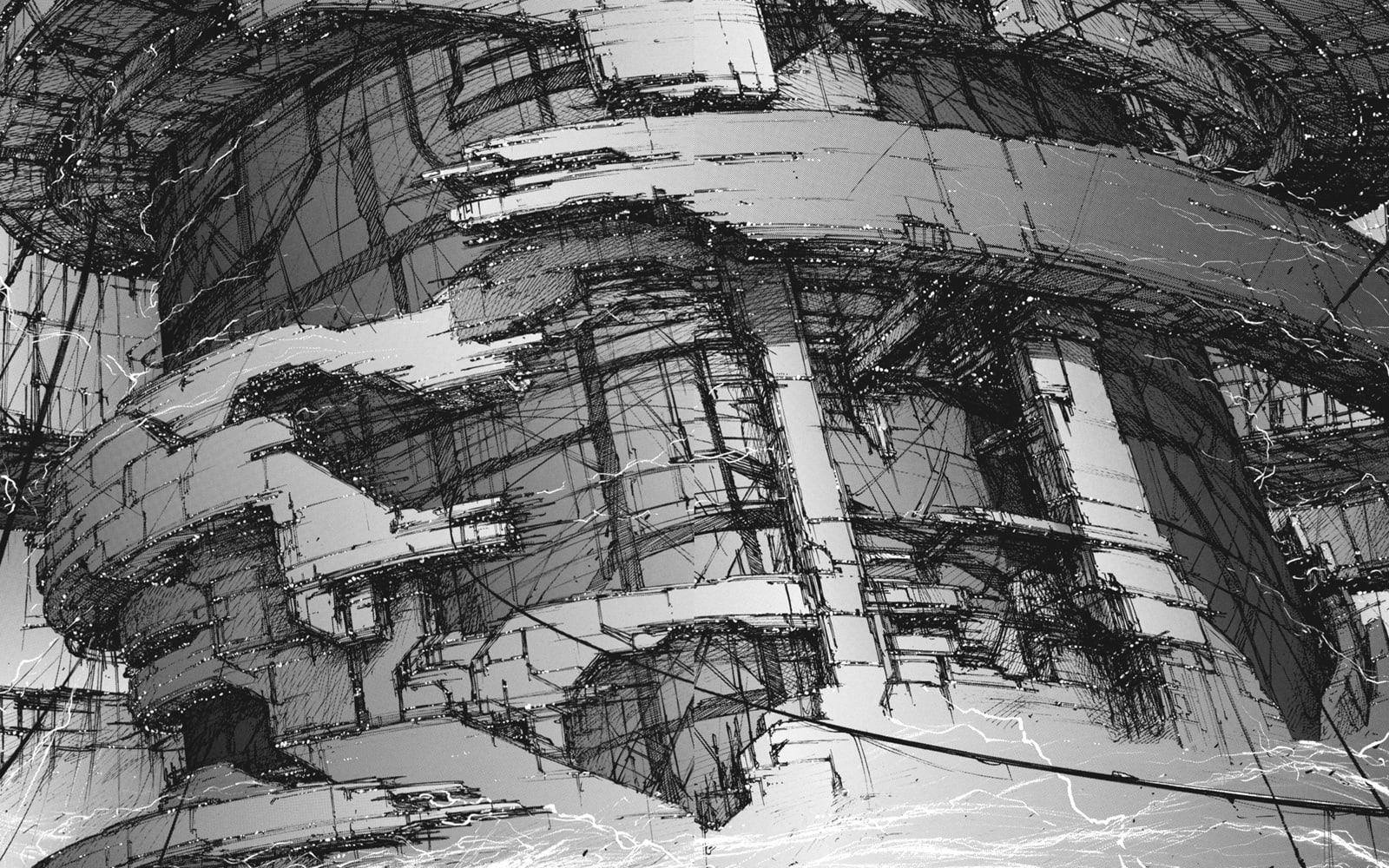
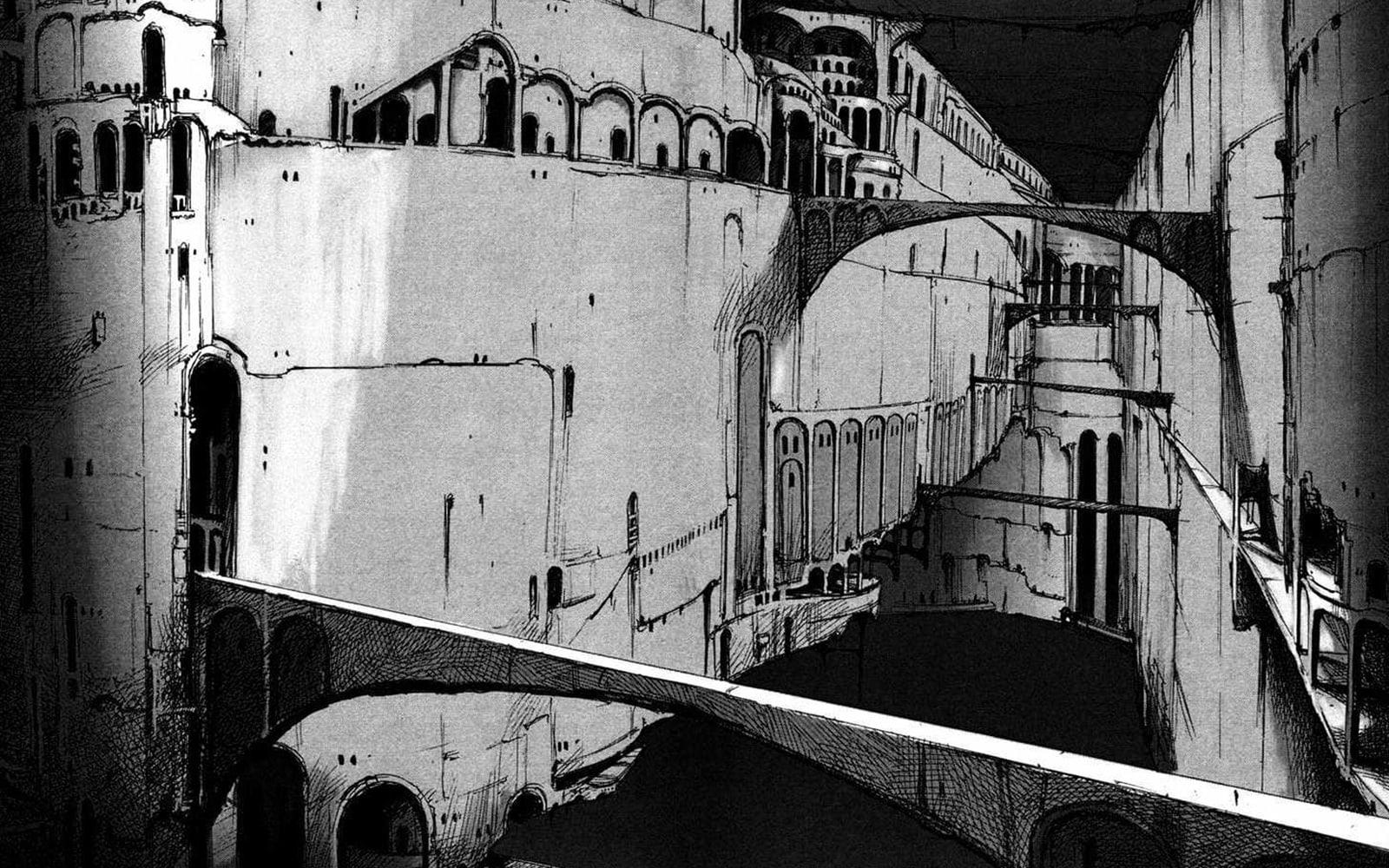
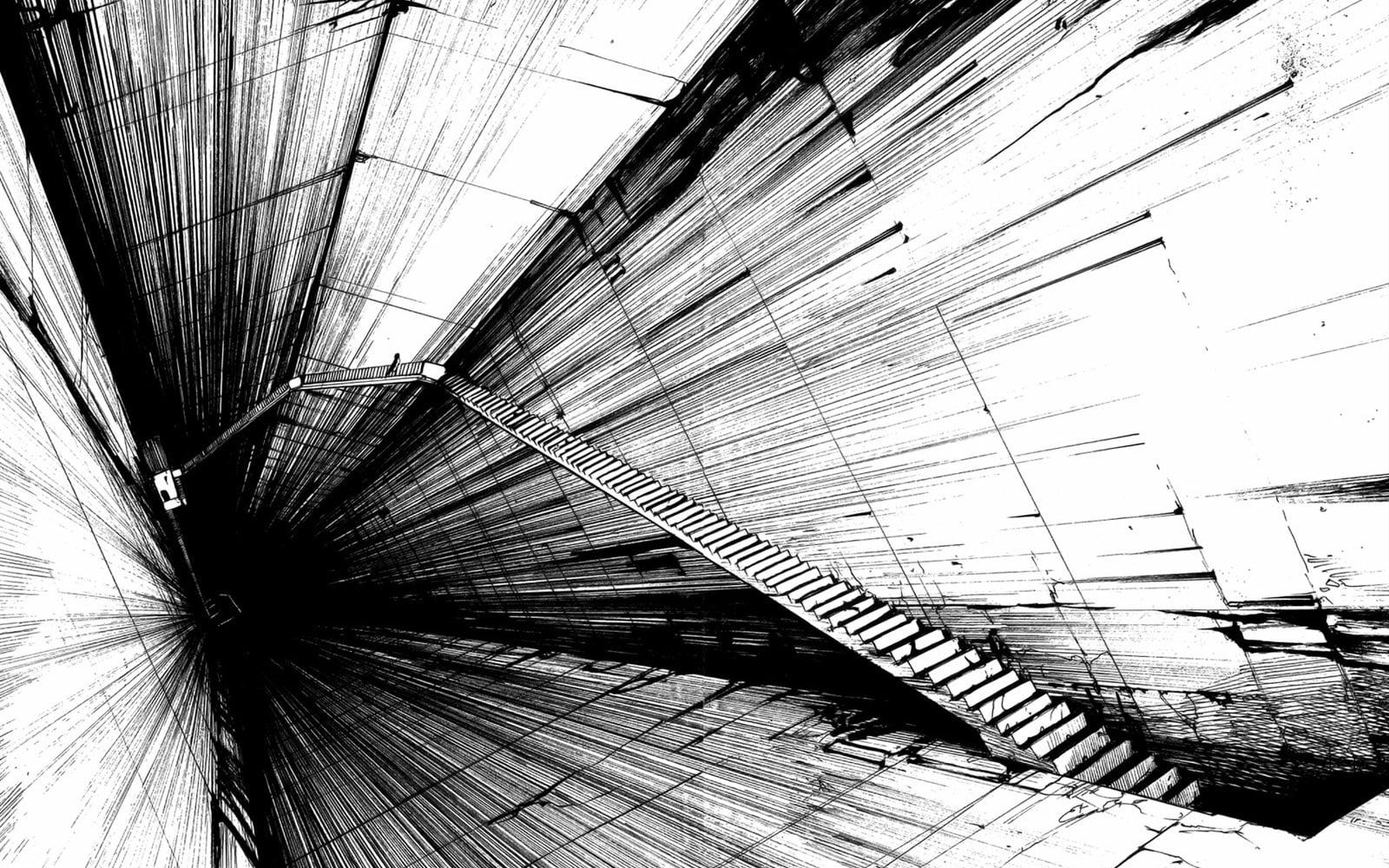
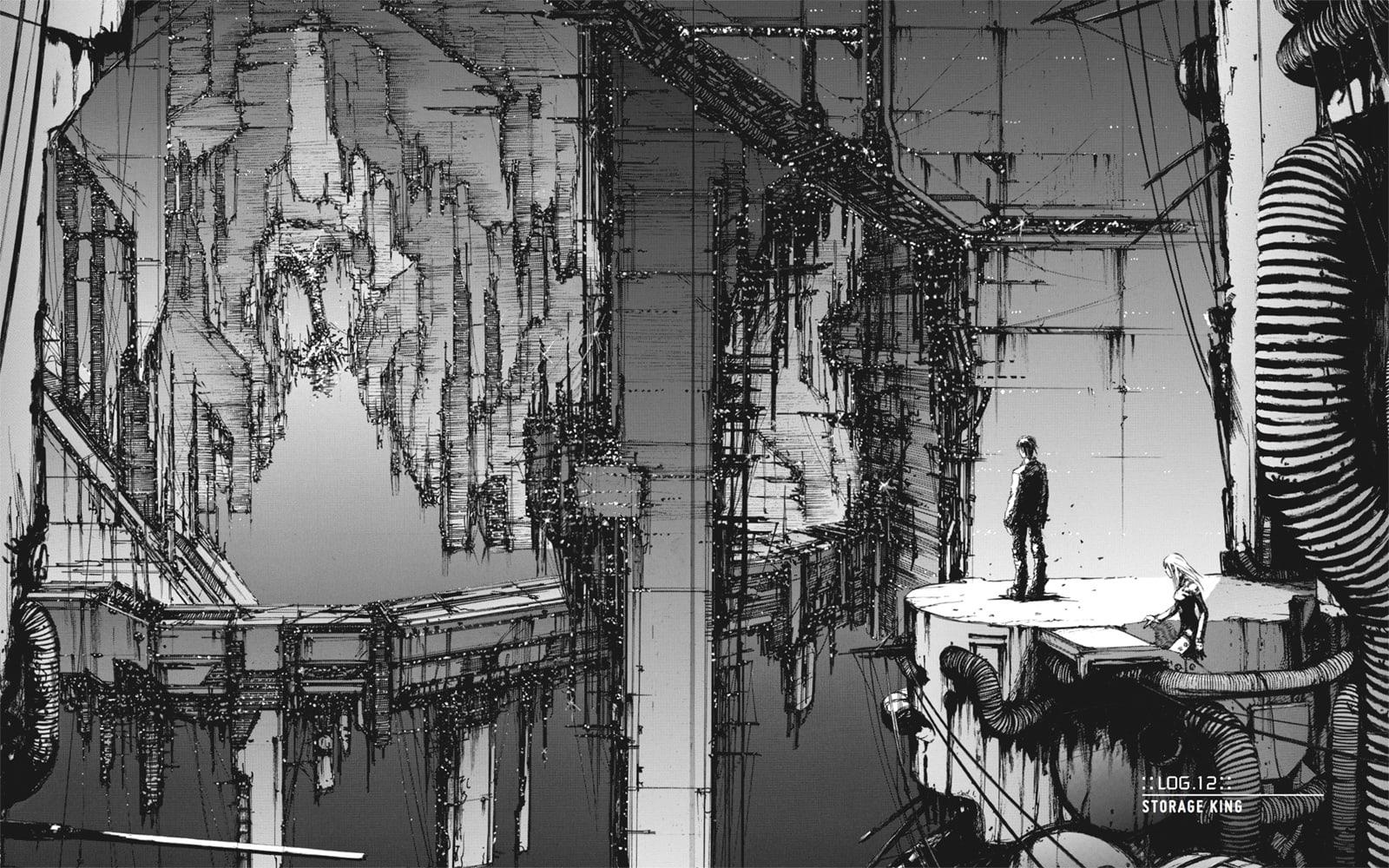
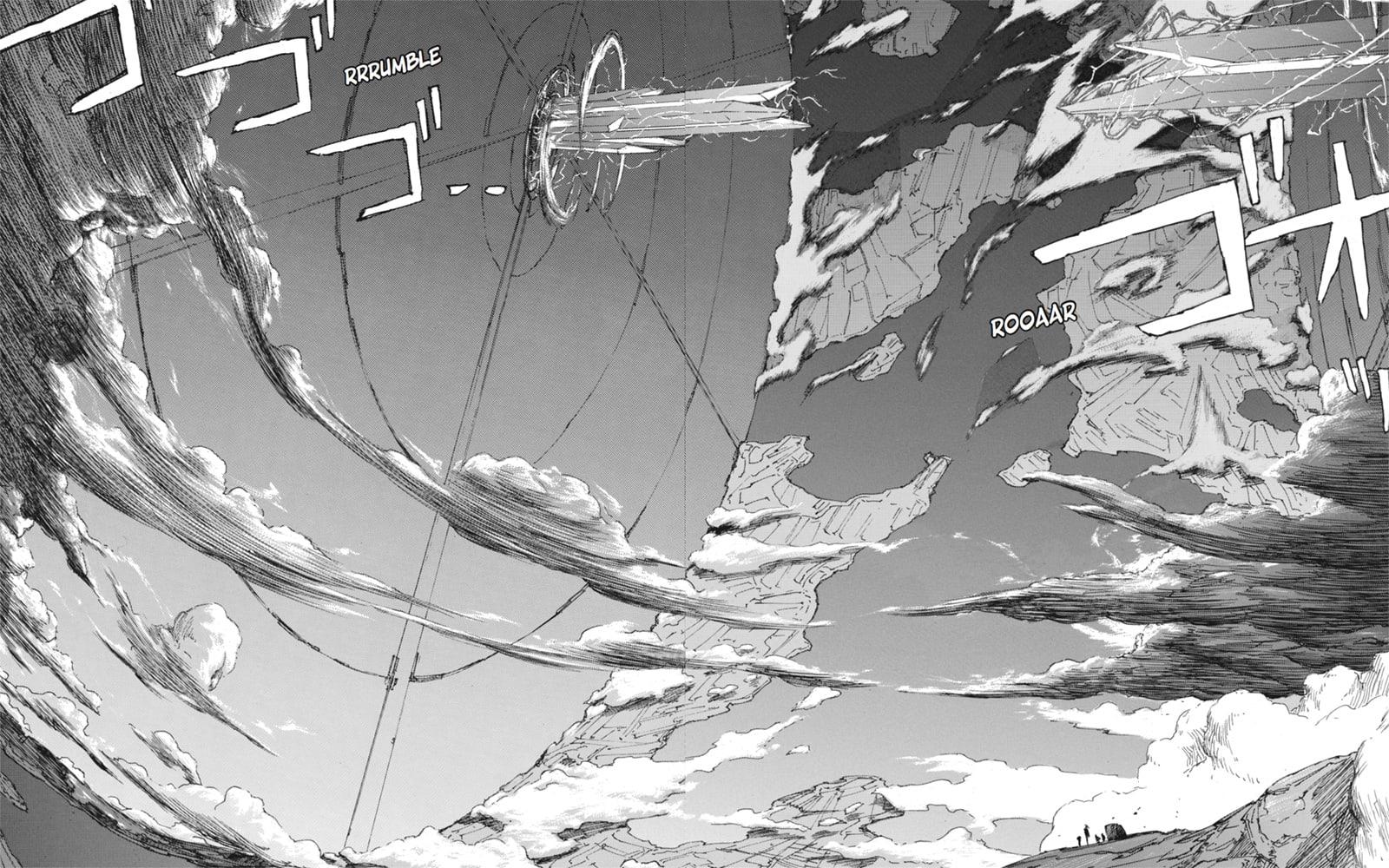
Populating Blame!‘s world are a diverse array of creatures and humans — if you can still call Nihei’s transformed characters “human.” The series’ main protagonist is Killy, a taciturn and heavily augmented human who’s on a quest to find the “Net Terminal Gene,” a genetic marker that’s necessary for humans to access the Netsphere (i.e., Blame!‘s version of the internet) and regain control over the City’s wild growth.
Killy possesses several superhuman abilities, with the most important being his nigh-indestructibility. He’s able to heal and rebuild himself even after taking tremendous amounts of damage (which happens pretty often). He also carries the highly destructive Gravitational Beam Emitter, with which he dispatches numerous foes and even punches through the nigh-impenetrable megastructure that separates the City’s various levels.
Along the way, Killy meets various factions, friends, and foes. His primary ally for much of the series is Cibo, a renegade scientist whose technical knowledge and hacking abilities come in handy, and who provides much of what little exposition happens in the series. Along with Cibo, Killy is aided by the Governing Authority, a mysterious organization in charge of protecting the Netsphere, and which occasionally sends representatives to help Killy and Cibo.
Arrayed against Killy and his allies are the Safeguard and Silicon Life. The Safeguard was originally designed to protect the Netsphere as well, but after the events in the NOiSE prequel, their programming grew more extreme and violent. The Safeguard now actively kills anyone who attempts to access the Netsphere without the “Net Terminal Gene.” Various members of the Safeguard appear throughout Blame!, each with their own motives and capabilities; some of them even ally with Killy at times.
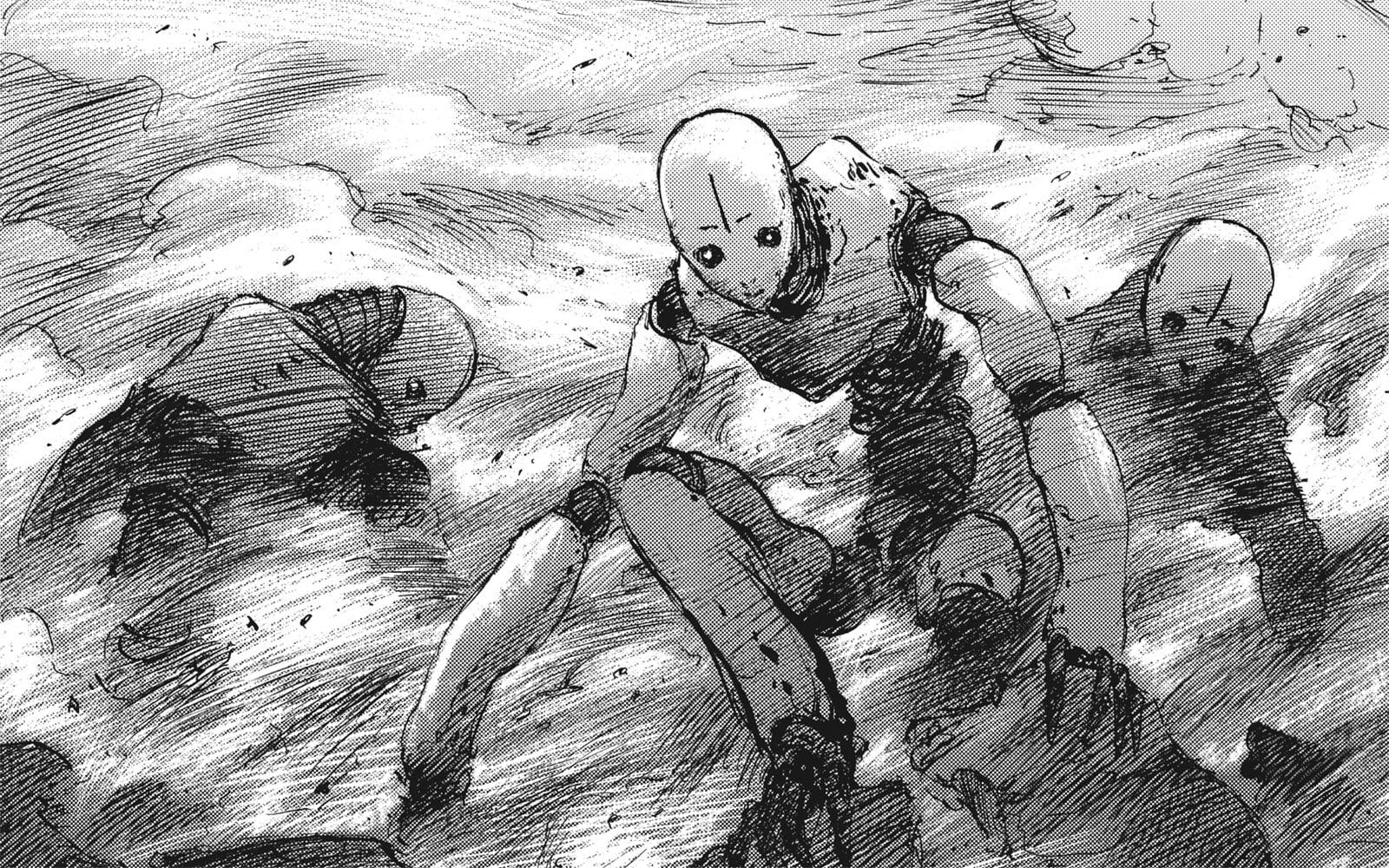
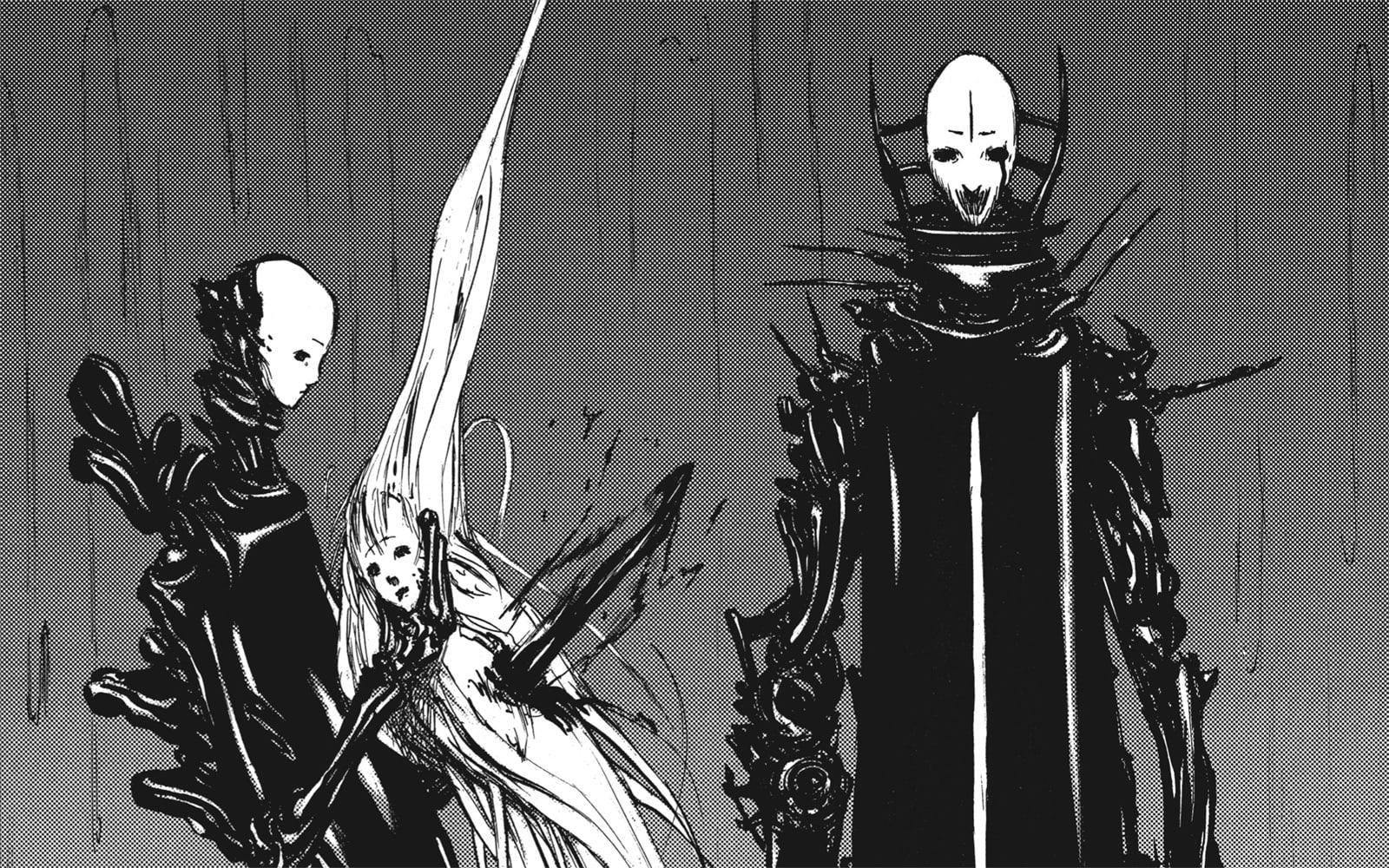
While the Safeguard are the primary antagonists with regards to Killy’s mission, it could be argued that the Silicon Life are the series’ true villains. As heavily, even grotesquely augmented cyborgs, Silicon Life barely resemble human beings anymore, and their primary goal is their own survival — which necessarily involves destroying anything that’s not Silicon Life.
The feeling is mutual, however, as Killy goes out of his way to kill any Silicon Life that he encounters, even those who don’t represent an immediate threat. (In one of the series’ more chilling scenes, Killy encounters a Silicon Life who only wants to study the aforementioned Jupiter-sized room and slices it apart without a thought.)
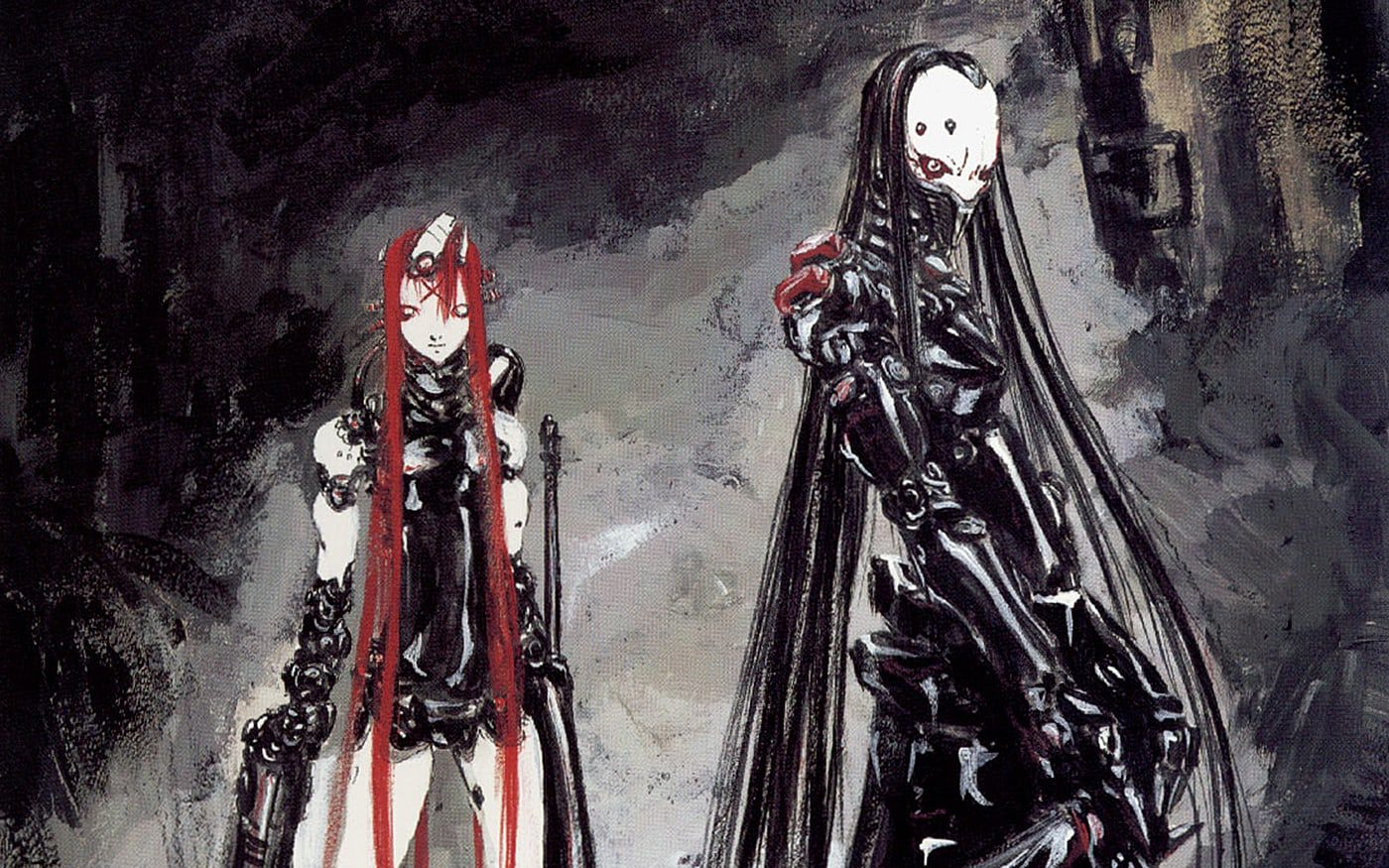
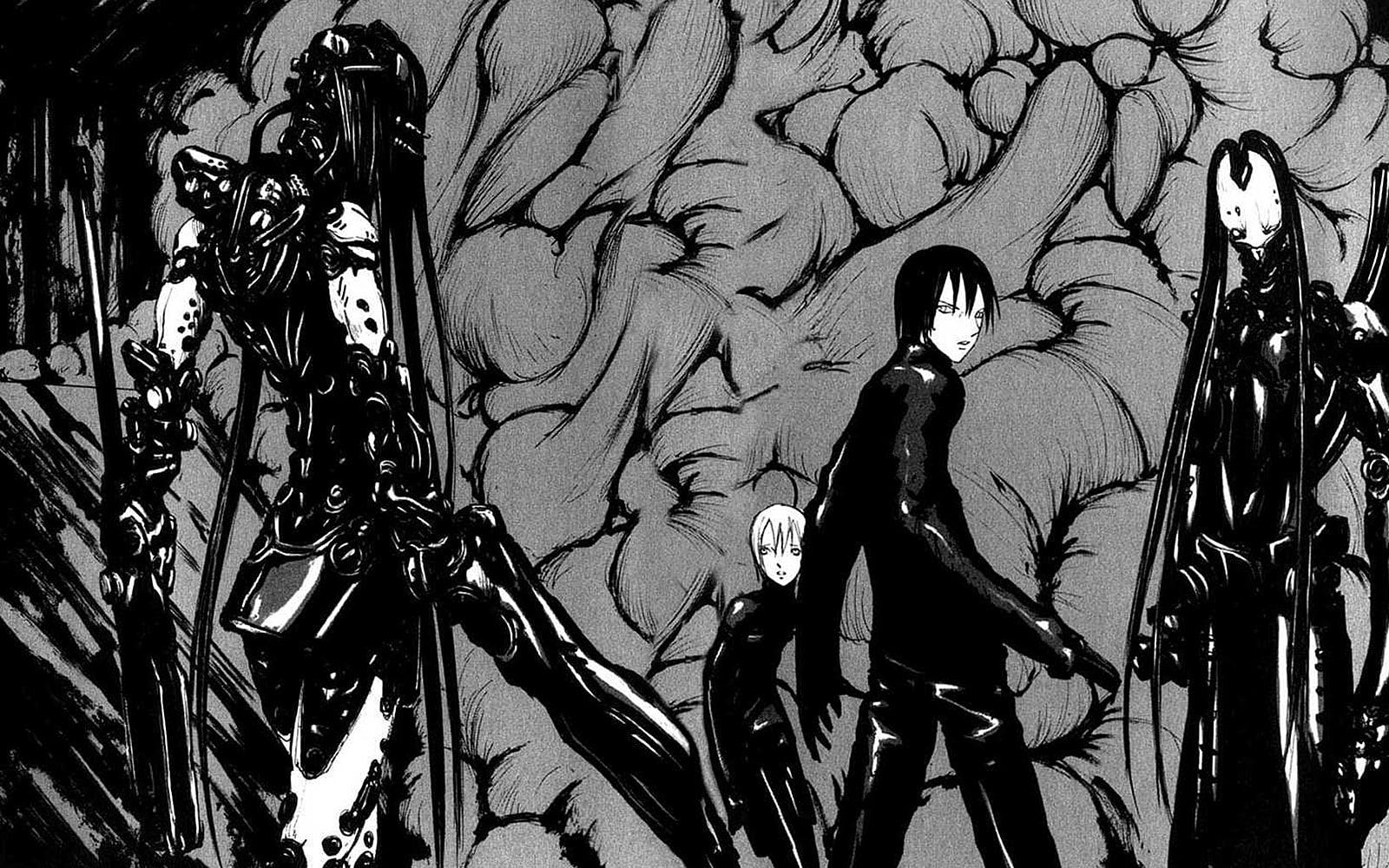
Blame! ends in a way that’s both open-ended and conclusive. Killy does, indeed, find the Net Terminal Gene, which has been recreated in a manner that’s wholly consistent with the series’ transhumanist ideals. However, it’s unclear how, exactly, it’ll stop the City’s growth. (In an intriguing and haunting short segue that happens before the final chapter, Nihei even goes so far as to question whether or not it even can, or if Killy’s quest is actually hopeless.)
After completing the series in 2003, Nihei would revisit the world of Blame! several times through one-offs, parodies, and quasi-sequels:
- Blame! Academy — A short parody that Nihei published off and on between 2004 and 2008. It places Killy, Cibo, et al. in a traditional Japanese school setting, and pokes fun at various events in the original Blame! series. It also features some pretty lewd, fan service-y humor. (For example, one of the villains has a gun that disintegrates the female characters’ clothing.)
- Blame!² — Published in 2008, this was a proper sequel set an unknown time after Blame!‘s ending. Also titled Chronicle of the Escape from the Megastructure by the Eighth Incarnation of Pcell, it follows the adventures of Pcell, a Silicon Life who was an antagonist in the original series. Both humanity and the Safeguard have actively targeted Silicon Life, leaving Pcell the last of her kind until a chance encounter with Killy changes her fate forever.
- NSE: Net Sphere Engineer — Originally published in 2004, this was another sequel set some time after the events of the original. In it, an engineer attempts to shut down the remaining Safeguard threats to humanity, which has begun to reclaim the City (implying that Killy’s quest was somehow successful).
In addition to these sequels and spin-offs, Blame! has also been adapted several times for the screen. The first was a series of “Original Net Animation” episodes directed by Shintaro Inokawa that originally aired in 2003. These episodes contain some loose links to the original manga (e.g., scenes told from different perspectives) but are also highly abstract.
One interpretation that I’ve come across is that they’re meant to represent Killy’s decaying memory logs. (In the manga, Killy has little to no clue of his past, other than his mission to find the Net Terminal Gene.) In any case, I like to think that the episodes’ strange imagery and ominous music are more intended to capture the otherworldly vibe of Blame!‘s setting than accurately convey its plot. In any case, they’re probably for diehard fans only.

Blame! also made a brief appearance in an episode of Knights of Sidonia, an adaption of one of Nihei’s more recent manga titles. One of Sidonia’s characters is seen watching a promo for Blame!: The Ancient Terminal City, implying that it’s a series broadcast throughout the Sidonia spaceship.

You can watch the full promo for Blame!: The Ancient Terminal City here.
Finally, Netflix released a full-length animated Blame! movie last year, which I reviewed shortly thereafter. Produced by Polygon Pictures and directed by Hiroyuki Seshita, the Blame! movie draws primarily from Killy’s encounter with the Electrofishers — which happens mostly in the second volume of the Vertical Comics reissue — but deviates quite a bit from that particular storyline as told in the manga. (Nihei wrote brand new material just for the movie.)

While an adequate enough adaptation, the Blame! movie’s biggest failing is that it just never quite captures the far-future weirdness that makes Nihei’s original manga so fascinating. For one thing, by telling a smaller story, the movie never really gives you a sense of the City’s scale and it largely overlooks Killy’s Sisyphean task to find the Net Terminal Gene.
Late last year, Polygon Pictures confirmed that they were working on a sequel to the Blame! movie. No release date or plot details have been released, but hopefully, it’ll delve even deeper into the manga’s grim mythology, and give viewers a better version of Nihei’s compelling, masterful, and just plain bizarre cyberpunk epic.
As for why I, personally, find Blame! so compelling, there are several reasons. First, I’m a sucker for epic and fantastical world-building, and that’s certainly what Nihei has done with Blame!. It’s not always the most coherent, and Nihei is fine just leaving a lot of things unanswered, but there’s no denying its massive scope. Combine that with his incredible artwork and technical drawing skills, and you frequently get sights that are breathtaking and might even be beautiful if they weren’t so grim.
Second, Blame! is post-apocalytpic and dystopic literature par excellence. But it’s also so weird in its depiction of usual dystopic themes (e.g., humanity that’s helpless in the face of technology run amok) that they feel fresh again. This is especially true when the manga gets really weird by taking a slight detour into a parallel reality or something similar.
Finally, there’s something refreshing about this sort of literature that doesn’t try to make any Big Important Points, but just focuses on kick-ass action sequences and bizarre adventures. But that’s not to say that Blame! isn’t occasionally thought-provoking and contemplative. As I wrote in my earlier review:
If Nihei’s Blame! is indeed transhumanist, then it’s a nightmarish counterpoint to such inspiring visions of the future. Blame! presents the dark side of transhumanism, where human beings unencumbered by humanity readily use technology to remake themselves into walking monstrosities, gaining incredible abilities even as they doom themselves to extinction. In Blame!‘s world, the Singularity arrived a long time ago, but rather than usher in a new golden age, it’s left nothing but decimation in its wake.
But while all that stuff is in Blame!, it’s also basically beside the point, which is to tell a kick-ass story in a fantastical world. In this regard, I’m reminded of George Miller’s Mad Max: Fury Road, one of the best action movie spectacles in recent years, and maybe of all time. Miller’s focus throughout his movie is to dazzle you with mind-blowing stunts and chase sequences, and not really wax philosophical about the human condition.
But ironically, that focus on spectacle — on style over and as substance — actually frees up Fury Road to include little moments, interactions, and strange asides that give it more depth and make its world more intriguing than might otherwise be possible. Blame! has similar grace notes, be it Killy’s random encounter with the mysterious Dry Men (during which he saves one of their children in one of the series’ most human moments), the surprisingly tender relationship between the artificial intelligence Mensab and her loyal guardian Seu, or the bittersweet aside that occurs right before the series’ conclusion.
These moments never get in the way of Nihei’s crazy action sequences, nor do they dilute the weirdness that defines Blame! so thoroughly. Which I’m thankful for, because if I’m honest, those are the main reasons why I read Blame!. But I’m glad those moments exist throughout its pages, standing out in such stark contrast to the series’ grimmer aspects and darker visions.